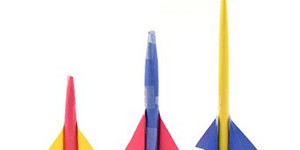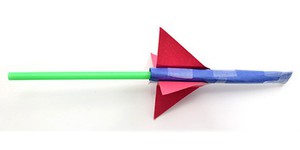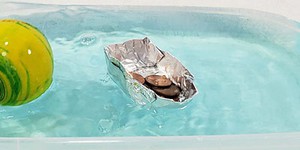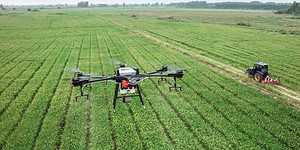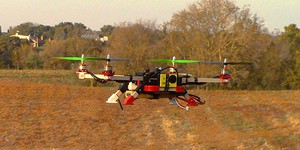Aerodynamics & Hydrodynamics Lesson Plans (7 results)
You've seen for yourself, or in videos, planes flying, rockets hurdling towards space, boats racing through the water and submarines exploring the depths of the ocean. Have you ever stopped and thought about the aerodynamics and hydrodynamics involved in their operation? There is a lot of interesting science that goes into how they work!
|
Select a resource
Sort by
|
Lesson Plan
Grade: 6th-8th
37 reviews
Do you need a fun, easy way to teach your students about the scientific method? Try this lesson that uses rockets made from nothing but paper, tape, and straws.
An elementary school version of this lesson plan is also available.
Read more
NGSS Performance Expectations:
Lesson Plan
Grade: 3rd-5th
25 reviews
This lesson will introduce your students to the scientific method using a fun, hands-on activity.
A middle school version of this lesson plan is also available.
Read more
NGSS Performance Expectations:
Lesson Plan
Grade: 6th-8th
4 reviews
People have used boats to transport things around the world for thousands of years. Unfortunately, those boats can be vulnerable to stormy seas and they can capsize. This lesson expands on the classic "aluminum foil boat" project. Normally, students would build a boat from a sheet of aluminum foil and see how much weight it can hold—in still water—before sinking. In this project, they will find out how well their boats hold up to waves!
Read more
NGSS Performance Expectations:
Lesson Plan
Grade: 3rd-5th
1 review
Students will discover the science behind how a drone works, explore how drones are used in agriculture, and program and operate a drone for the purpose of surveying a field.
Read more
NGSS Performance Expectations:
Video Lesson
Grade: 3rd-5th
2 reviews
In this fun video lesson, students will pretend to be engineers at an engineering company that constructs paper airplanes. They will identify the criteria for success from provided readings and define the constraints on their solutions. Using the engineering design process they will prototype, test, and deliver their best paper airplanes.
Read more
NGSS Performance Expectations:
New
Lesson Plan
Grade: 6th-9th
In this lesson plan, students will model the complex biologic manufacturing process. First, they will model the cellular expansion process that occurs in a bioreactor. Then, students will lyse the cells to isolate the proteins from the dyed cell debris. Lastly, they will model the advanced filtration process to purify proteins so they can be used as medicines.
Read more
NGSS Performance Expectations:
Lesson Plan
Grade: 6th-8th
Working as if they were engineers, students design and construct model solar sails made of aluminum foil to move cardboard tube satellites through "space" on a string. Working in teams, they follow the engineering design thinking steps—ask, research, imagine, plan, create, test, improve—to design and test small-scale solar sails for satellites and space probes. During the process, learn about Newton's laws of motion and the transfer of energy from wave energy…
Read more
NGSS Performance Expectations:
Lesson Plan
Grade: 6th-8th
1 review
(Image credit: by ackab1, via Flickr. Creative Commons).
Students will discover the science behind how a drone works, explore how drones are used in agriculture, and program and operate a drone for the purpose of monitoring grazing sheep.
Read more
NGSS Performance Expectations:
|

